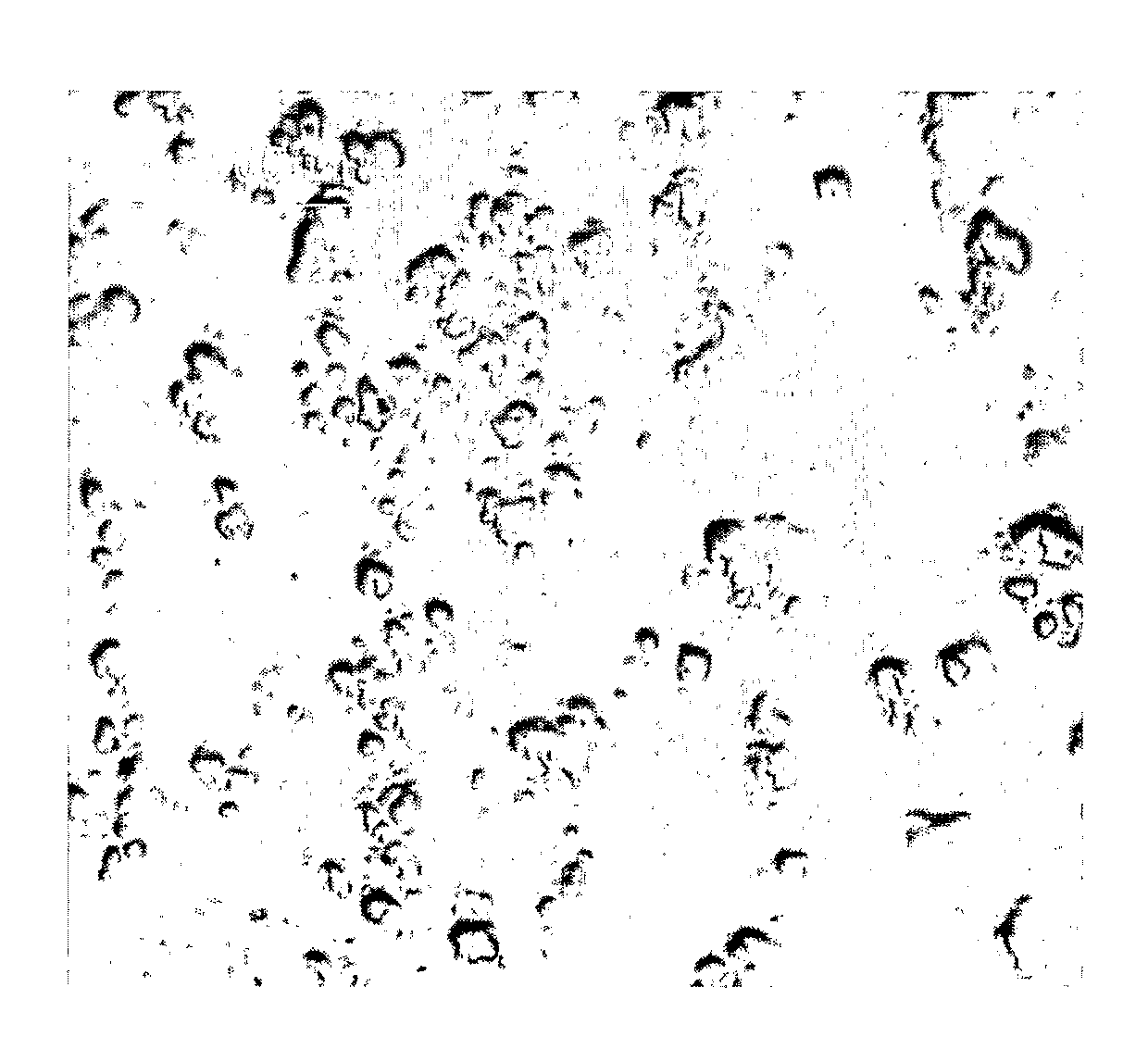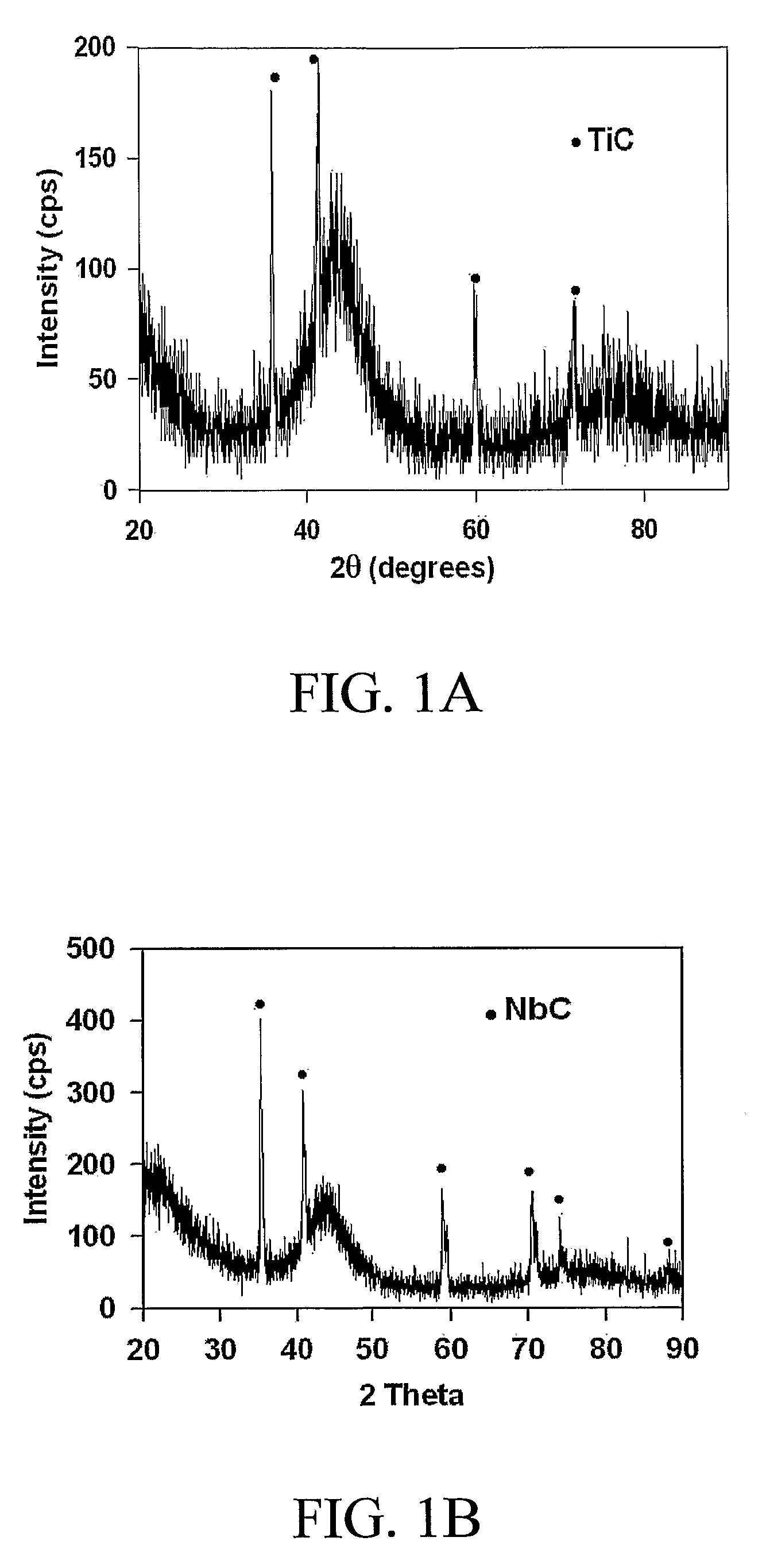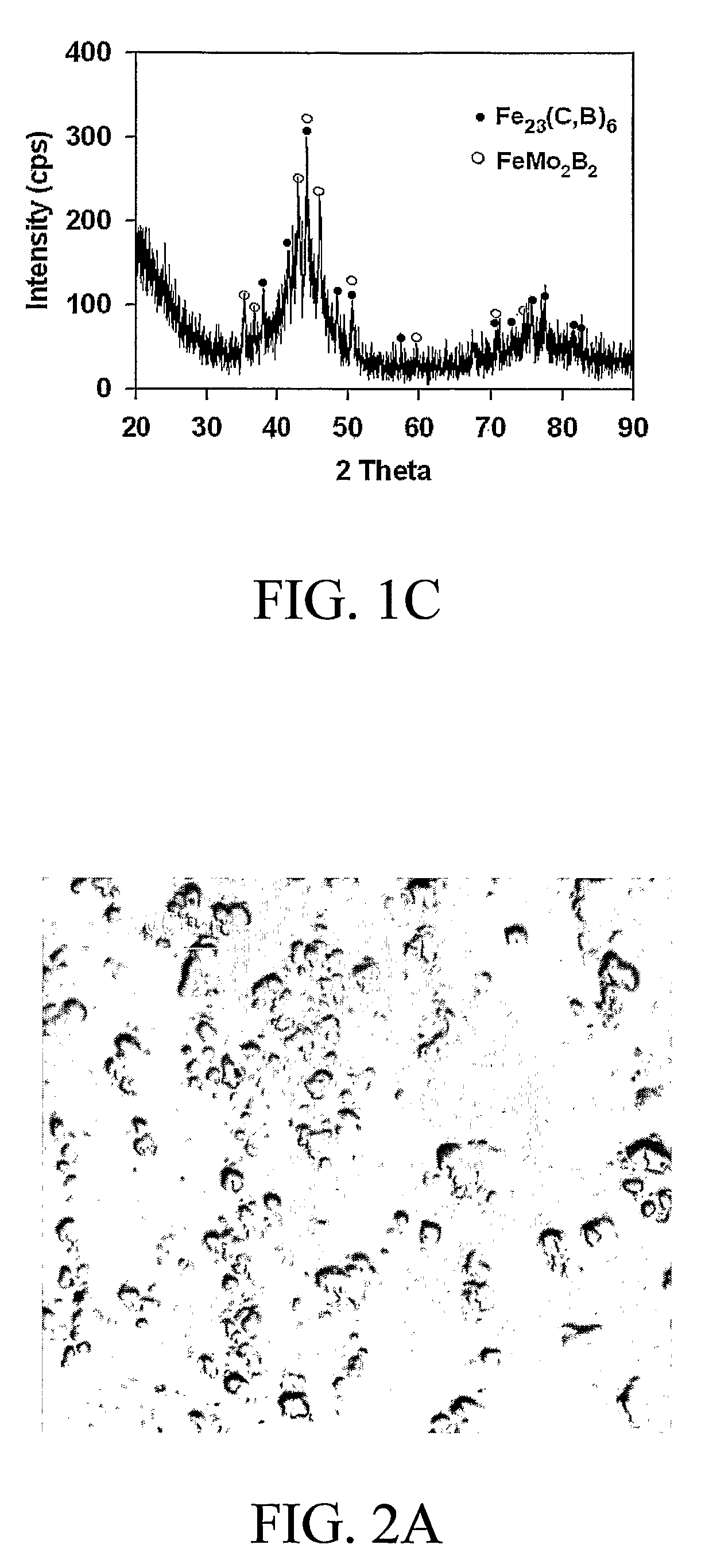Amorphous steel composites with enhanced strengths, elastic properties and ductilities
a composite material and amorphous steel technology, applied in the field of nonferromagnetic amorphous steels, can solve the problems achieve the effects of reducing glass forming ability, improving ductility, and enhancing fracture strength and elastic moduli
- Summary
- Abstract
- Description
- Claims
- Application Information
AI Technical Summary
Benefits of technology
Problems solved by technology
Method used
Image
Examples
Embodiment Construction
[0031]Referring to Table I, Table I. provides melting temperature, heat of formation, physical densities, and mechanical properties of refractory carbides and nitrides for comparison with monolithic DVG 101 amorphous steel, where Tl=liquidus temperature, ΔH (298K)=heat of formation at 298 K, ρ=mass density, HVickers=Vickers hardness, E=Young's modulus, B=bulk modulus, G=shear modulus, and σ=Poisson ratio. The positive ΔH (298K) noted for DVG 101 is based on a calculation for metastable Fe23C6 phase (Cr23C6 structure) [15]. Also listed are additional ceramic compounds that can be used in amorphous steel composites if consolidation instead of bulk solidification is the method of choice. T, for the latter ceramics are not listed.
[0032]
TABLE ITlΔH (298K)ρHVickersEBG(° C.)(kJ / g-atom)(gm / cm3)(GPa)(GPa)(GPa)(GPa)σDVG 101~1160positive8.0512216190820.31-0.34TiC3067−1854.91355103901860.19ZrC3420−1966.5926440—1720.19HfC3928−21012.6726510>2401930.18VC2830−1035.65274303901570.22NbC3600−1417.8520...
PUM
| Property | Measurement | Unit |
|---|---|---|
| thickness | aaaaa | aaaaa |
| shear modulus | aaaaa | aaaaa |
| fracture yield strength | aaaaa | aaaaa |
Abstract
Description
Claims
Application Information
 Login to View More
Login to View More - R&D
- Intellectual Property
- Life Sciences
- Materials
- Tech Scout
- Unparalleled Data Quality
- Higher Quality Content
- 60% Fewer Hallucinations
Browse by: Latest US Patents, China's latest patents, Technical Efficacy Thesaurus, Application Domain, Technology Topic, Popular Technical Reports.
© 2025 PatSnap. All rights reserved.Legal|Privacy policy|Modern Slavery Act Transparency Statement|Sitemap|About US| Contact US: help@patsnap.com



